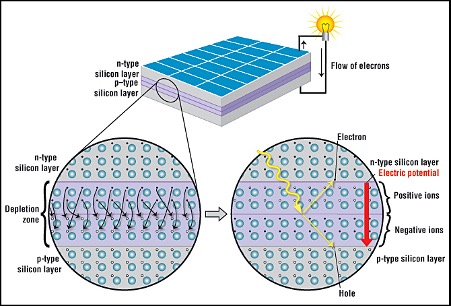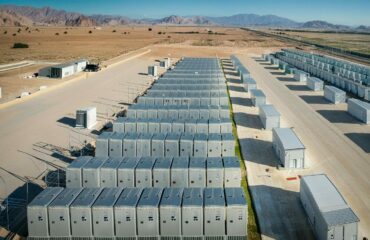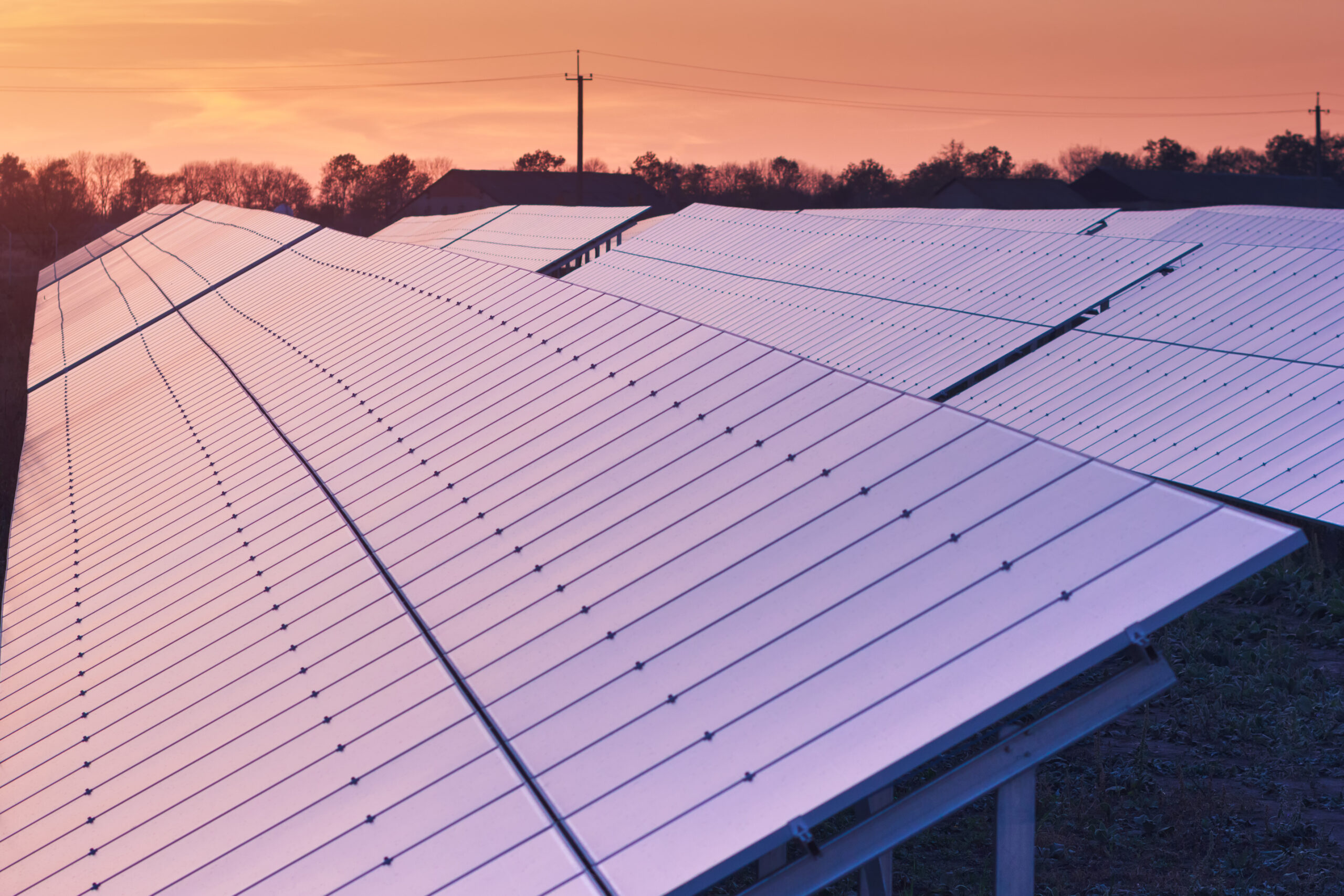
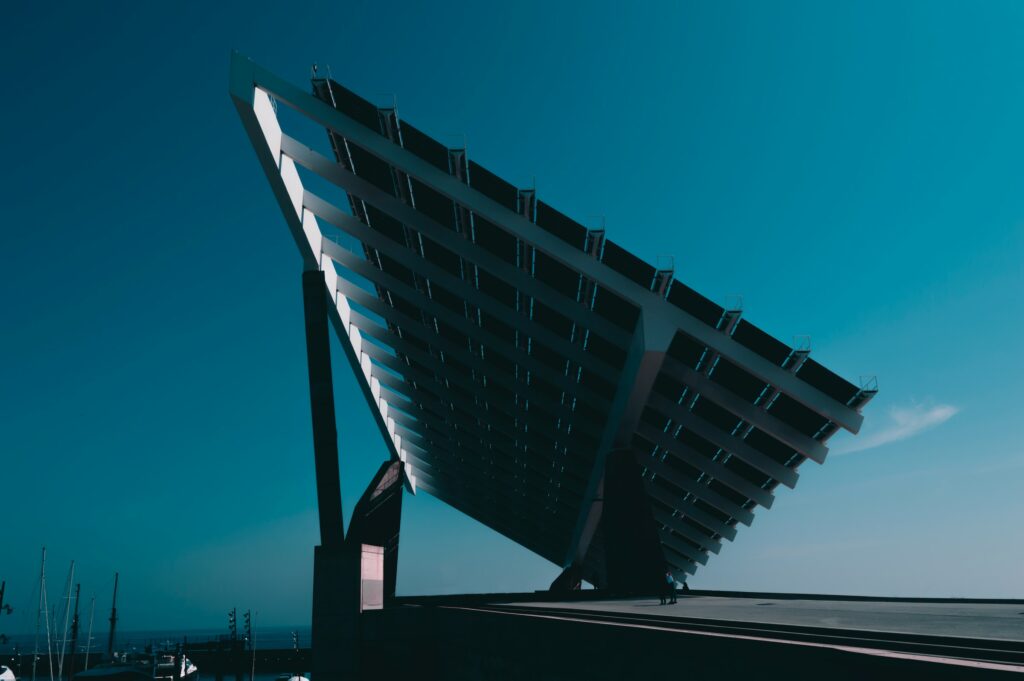
Solar energy is quickly becoming a cornerstone in the battle against climate change, accounting for nearly three-quarters of the newly added renewable energy capacity in 2023. This article dives into the fundamentals of solar energy, its renewable nature, uses, and the numerous advantages it offers now and in the future.
How does solar energy work?
Let’s get the basics in order; solar energy is a clean, abundant, and renewable resource essential in mitigating global warming.
Understanding how it works is crucial to appreciating its potential.
So, let’s dive into the basics of how solar energy works.
Solar radiation
Every day, every hour, every second, the sun emits energy in the form of electromagnetic radiation, which travels through space and reaches our planet. During daytime, this energy converts into usable forms of power, primarily electricity and heat.
Solar radiation includes visible light, ultraviolet light, and infrared radiation, which collectively provide the energy needed for solar technologies to function.
Photovoltaic effect
The key principle behind the conversion of solar radiation into power is the photovoltaic effect. This is the process by which solar cells, composed of semiconductor materials, convert sunlight directly into electricity. When sunlight hits a solar cell, photons from the light are absorbed by the semiconductor material, typically silicon. This absorption of photons excites electrons, freeing them from atoms and allowing them to flow through the material, creating an electric current. This current is then captured and used as electricity.
Semiconductors work tirelessly behind the scenes to power the world around us – from the technology in your house to cars to solar panels.
But what is a semiconductor really?
The short answer version goes like this: Semiconductors conduct electricity in some situations and block it in others, which is necessary when you’re dealing with machinery and technology that is highly dependent on power flowing the right way at the right time.
The longer version goes like this: A semiconductor is a chemical element or compound, typically made up of silicon, that conducts electricity under certain conditions and blocks it in other conditions. Think of metal, like a copper wire for example. Now think about electricity flowing through it. In this case you cannot switch it off without taking away the source or supply – like using a switch to stop the flow of current through the wiring of your room into your light bulb. A semiconductor places itself somewhere in between. You can make it conduct or block current by design.
How solar panels work
Not that you’re onboard with the basics, let’s move on the the solar panels themselves.
Solar panels, or photovoltaic (PV) panels, capture the sun’s energy. A typical commercial solar panel consists of 72 solar cells made of silicon and other materials to enhance light absorption and electrical conductivity.
The structure of a solar panel
Silicon-based cells that convert sunlight into electricity.
Protects cells from environmental damage.
Shields cells while allowing sunlight to pass through.
Provides structural support, usually made of aluminum.
The function of a solar cell
Silicon absorbs photons, generating electron-hole pairs.
Junctions between silicon types create an electric field, separating electrons and holes.
Freed electrons flow through the circuit, generating direct current (DC).
How the energy is converted
Solar power plants produce direct current (DC) electricity, which must be converted to alternating current (AC) using inverters, making it compatible with household appliances and the power grid itself.
Understanding AC and DC
Electric current flows in two different ways: as alternating current (AC) or direct current (DC). The main difference is in how the electrons move. In direct current (DC), electrons flow steadily in one direction, like water through a hose. In alternating current (AC), the electrons keep changing direction, moving back and forth, like a tide going in and out.
We use AC in our homes because it’s better for sending electricity over long distances. Power plants can easily increase or decrease AC voltage using transformers, which makes it more efficient to send electricity to faraway places without losing much energy. Most household appliances are also designed to work with AC, so it’s the standard type of electricity provided to homes.
Is solar energy renewable?
Solar energy is an infinite resource, with the sun providing more energy in one and a half hours than the world uses in a year. According to the United Nations, an energy source is renewable if it is replenished at a higher rate than consumed. Solar energy fits this definition perfectly, unlike fossil fuels, which deplete faster than they are replenished and release significant levels CO2 when used.
As we have covered in a different article, not only do most renewable energy technologies, including solar, emit very low levels of CO2 for every kilowatt hour of energy produced, but studies also suggest that the energy needed to produce, install and recycle solar panels can be recouped in only two years.
The different ways to harness solar
Solar energy production involves various technologies and methods to capture and convert sunlight into electricity and heat. Let’s take a look at the most common ones.
Ground-mounted photovoltaic (PV) power plants
Photovoltaic power plants, also just commonly referred to as solar farms or solar parks, use large arrays of solar panels to capture sunlight and convert it into electricity. When people talk about solar farms, this type is usually what comes to mind.
These installations are ground-mounted and typically located in areas with high solar radiation and can range from a few megawatts to hundreds of megawatts in capacity, even gigawatts.
The largest solar farm in the world boasting a huge 5 GW of capacity has just been put online in China.
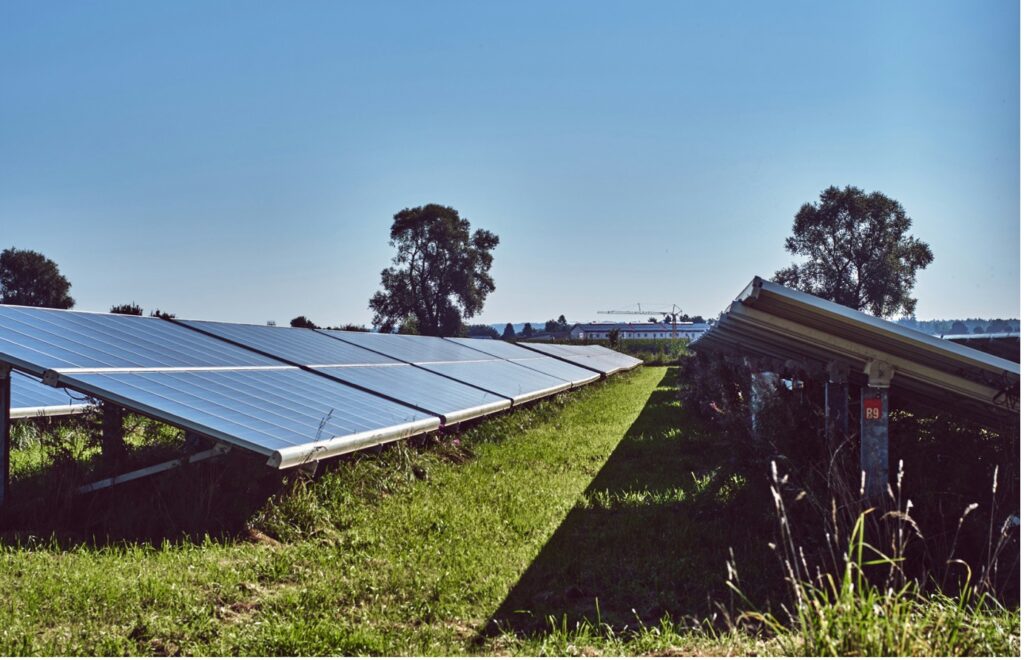
Rooftop solar systems
Rooftop solar is becoming increasingly popular as the push towards energy self-sufficiency and more energy-efficient buildings is growing. Few think of rooftop solar as being a big contributor to the green transition due to less scalability than ground-mounted solar parks, but the reality is that rooftop solar is currently the largest source of solar installations in the EU in terms of added capacity.
These systems are considered an effective way for homeowners to harness solar energy directly from their properties. These systems, not surprisingly, involve installing solar panels on the roofs of buildings to capture sunlight and convert it into electricity. For residential use, these systems typically consist of a solar panel, an inverter, and sometimes a battery storage system to store excess energy for later use.
Commercial solar systems
These systems are larger than residential setups and are used by businesses and industrial facilities to reduce energy costs and carbon footprints. They are typically installed on large storage facilities where large, flat surfaces makes installation and utilization easier.
An example is the world’s largest rooftop solar project by DSV in Denmark, covering 300,000m2 and generating 35 MWp. If you are the type who likes to measure size by the number of football fields, we can report that the size of the project is equal to roughly 42 football fields.
The project is set to boast 80,000 solar panels, generating a 35 MWp. That’s enough to nearly power the entire facility and offset 5,300 tons of CO2 emissions each year.
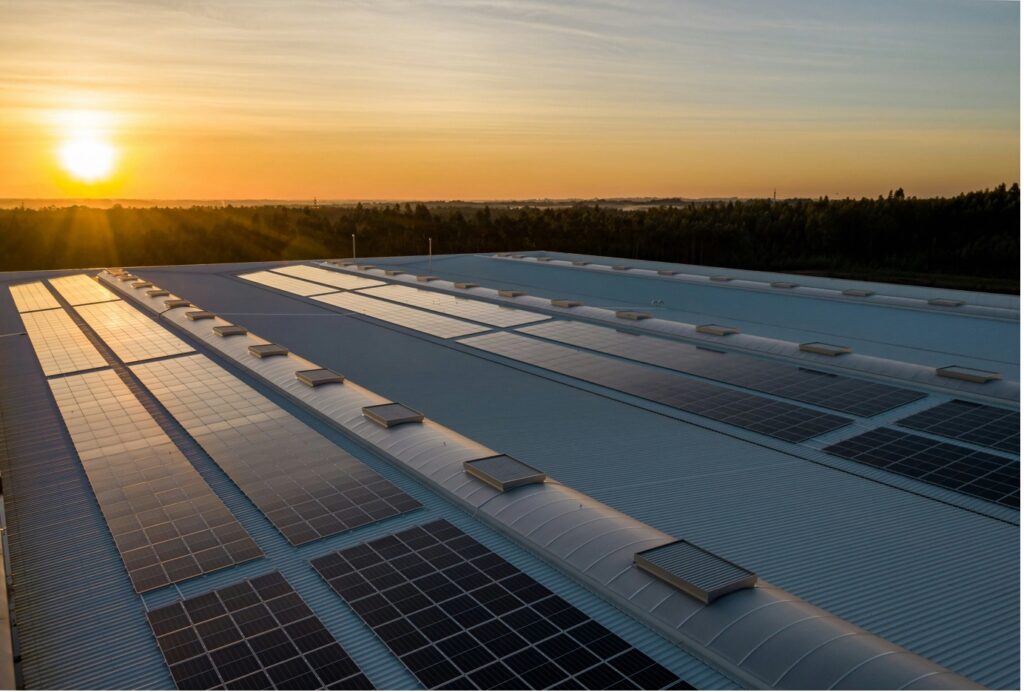
Agri-PV systems
Since installation of solar panels is generally easier in flat areas, typically areas occupied by farmland, the interest in Agrivoltaic PV systems (APV) is rising. APV systems are starting to gain traction as Governments around the world are starting to impose restrictions on the installation of ground-mounted PV solar farms on arable land to safeguard local food production.
Italy has already banned new solar farms on arable farm land. The good news? Agri-PV is still allowed. Although the technology hasn’t caught the same level of attention (yet) as regular ground-mounted systems. This is mainly because of the higher costs associated with this type of plant.
Agri-PV allows the dual-use of farmland to improve resource efficiency, enable synergies to increase productivity of certain crops and PV panels, and protect crops against pests and climate events. As weather events get more and more severe, APV oftentimes serve as a convenient shade for berries, viticulture, and arboriculture in times of drought or sustained periods without rain.
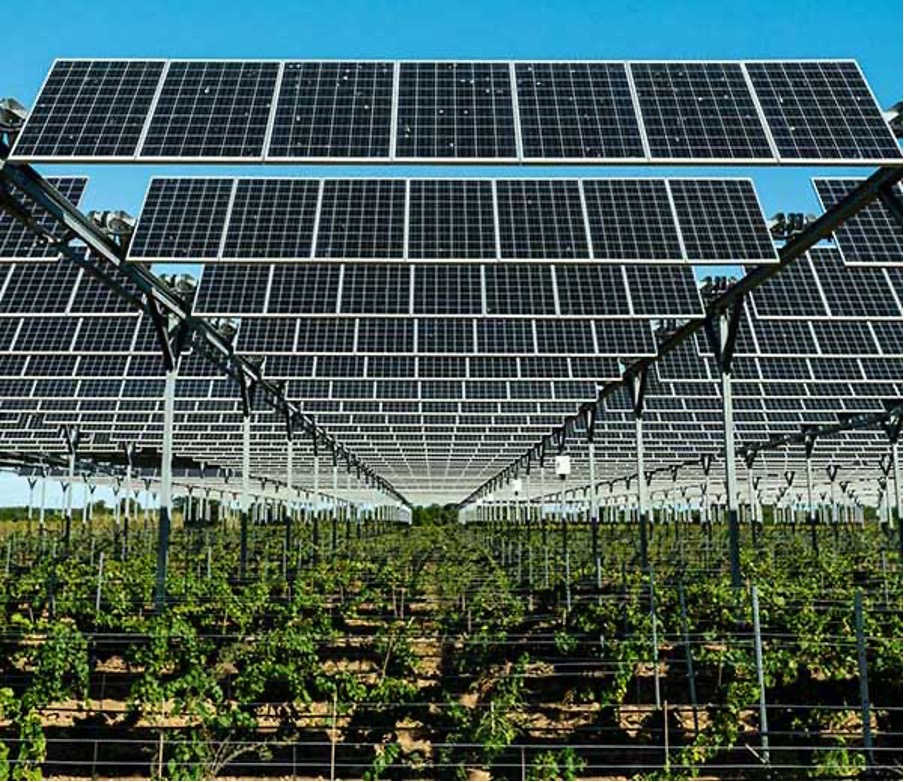
Concentrated solar power plants (CSP)
Concentrated solar power plants are not as common a sight as PV or even APV systems. Despite its higher efficiency of more than 40% for some CSP technologies, regular PV systems with efficiencies ranging between 20-23% are often chosen because of the lower cost associated with building and maintaining it.
To put it in perspective, the global market for concentrated solar was valued at USD 7.19 billion in 2023, whereas the global market size for solar PV was estimated at USD 170.25 billion.
However, the global market for CSP it still set to grow in the coming years, which would increase your chances of seeing such a plant.
The way CSP works is quite simple; these systems use mirrors or lenses to focus sunlight onto a small area to produce heat, which is then used to generate electricity. CSP technology is particularly effective in regions with high direct sunlight. If you have ever driven from the West Coast of the United States towards Las Vegas, then chances are you have seen a co-called ‘power tower’ or two along the way.
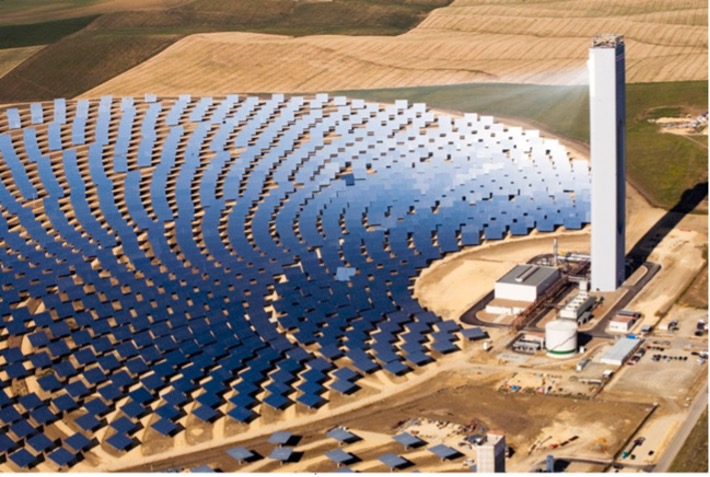
The advantages of solar energy
Now that you have a good sense of how solar energy works and the different types there is out there, let’s take a deeper look at what the advantages of solar are.
Besides the obvious, there are a lot of hidden advantages that go beyond producing clean, renewable energy for years to come.
Less global warming
Our modern societies and continuously growing global population comes with a price.
Increasing populations and improved living conditions has had demand for fossil fuels soaring.
These fuels release gases that trap heat, leading to the most apparent impact of climate change: A very hot planet.
Although warm weather sounds nice, especially if you live in Northern geographies, it brings along with it stronger storms, droughts, rising sea levels, and extinctions.
The United Nations reports that extreme weather events in the last fifty years have caused over two million deaths and $4.3 trillion in economic losses. The World Economic Forum forecasts that, driven by global warming, these numbers could rise to 14.5 million lives lost and $12.5 trillion in economic losses by 2050.
Better public health
Pollution from burning fossil fuels is having a significant impact on our environment, but also on our health.
According to numbers from the World Bank, the global cost of health damages from air pollution amounts to $8.1 trillion, equal to 6.1% of the global GDP.
In contrast, renewable energy sources like solar PV generate power without the same public health side effects.
Jobs and other economic benefits
From 2019 through 2023, the clean energy sector added 4.7 million jobs globally, bringing the total to 35 million. But it doesn’t stop there.
By 2030, the World Economic Forum forecasts that the energy sector, the clean one that is, will create 10.3 million net new jobs.
In addition to creating jobs directly, the clean energy sector has positive economic effects on a much wider ecosystem.
Local municipalities and communities stand to benefit from property and income taxes generated by PV projects. Take farmers for example. They often own extensive amounts of land, but with new PV installations many have the option to earn a secondary income from land leases.
Land lease prices for photovoltaic (PV) installations on farmland ranges from €3,000 to €3,500 per hectare per year in Germany, which is a very attractive increase compared to the average cost per hectare of €357.
Stable prices and increased resilience
Not only will electricity become more affordable over time when adding more renewable energy to the mix, but price stability and resilience also increases.
Remember the Russian invasion of Ukraine?
Stable prices and a resilient energy supply was greatly needed when the war broke out.
Following the invasion, oil, coal, and gas prices skyrocketed by 40%, 130%, and 180%, respectively.
Despite the fact that renewable energy does require large upfront investments, the so-called levelized cost of energy (LCOE) for solar and most renewable energy sources is still lower than that of fossil fuels.
LCOE measures the lifetime costs divided by energy production, calculating the present value of the total cost of building and operating a power plant over its assumed lifetime. This metric allows for the comparison of different technologies with varying lifespans, project sizes, capital costs, risks, returns, and capacities.
In contrast, fossil fuel prices vary dramatically from time to time, with the Russian invasion of Ukraine being one of the latest instances.
Fossil fuel infrastructure has another downside: Vulnerability.
Back when Hurricane Sandy damaged fossil fuel-dominated electric generation and distribution systems in New York and New Jersey, millions had no power, but in the Northeast where renewable energy was the main source, the storm get weathered with minimal damage or disruption because of larger distribution.
The future of solar energy
The field of solar energy is experiencing rapid technological advancements that are making solar power more efficient, accessible, and sustainable. Here are some of the key recent developments:
Perovskite solar cells
Probably the most talked about and researched technology in solar in recent years.
The technology is a breakthrough because of its higher efficiency and lower production costs. The latest advancements have focused on improving stability and durability, since perovskite cells degrade very quickly out in the real world, some showing a capacity dip of more than 80% in two years or less. Although the race towards commercializing perovskite solar cells has been going on for many years, we might only have to wait a few months for the first panels to hit the market thanks to UK-based producer Oxford PV and the Germany’s Fraunhofer ISE institute.
If they make the cut, the future of solar efficiency gets a big boost and paves the way for even more renewable energy.
Bifacial solar panels
Bifacial panels are yet another advancement that could improve the future for solar power generation. These panels do exactly as the name implies, panels absorb the sun bilateral, meaning these panels can absorb energy from both sides, significantly helping to increase the overall energy output. Bifacial panels are especially effective in locations with high reflectivity, such as snowy or sandy environments, where the ground reflects additional sunlight onto the rear side of the panels. The US alone imported 12.4 GW of bifacial panels from January-June of 2023 and only 1.4 GW of monofacial panels. Although this doesn’t showcase the whole picture, it is greatly indicating that developers are looking for ways to maximize output.
Energy storage solutions
The development of energy storage solutions, such as battery energy storage systems, is crucial for the effective use of solar energy, both now and in the future. Energy storage systems helps securing a more steady and low-cost flow of energy by storing the excess energy that is generated during peak sunlight hours for use during cloudy periods or at night. 2023 alone saw battery storage adding 41.5 GW of capacity worldwide, but it doesn’t stop there. IEA reports that COP28 targets hinges on battery deployment taking off by increasing at least sevenfold by 2030. In connection with solar PV, battery storage is quickly becoming a backbone of our future energy mix. Last year it became the most invested-in technology, even outpacing solar PV.
